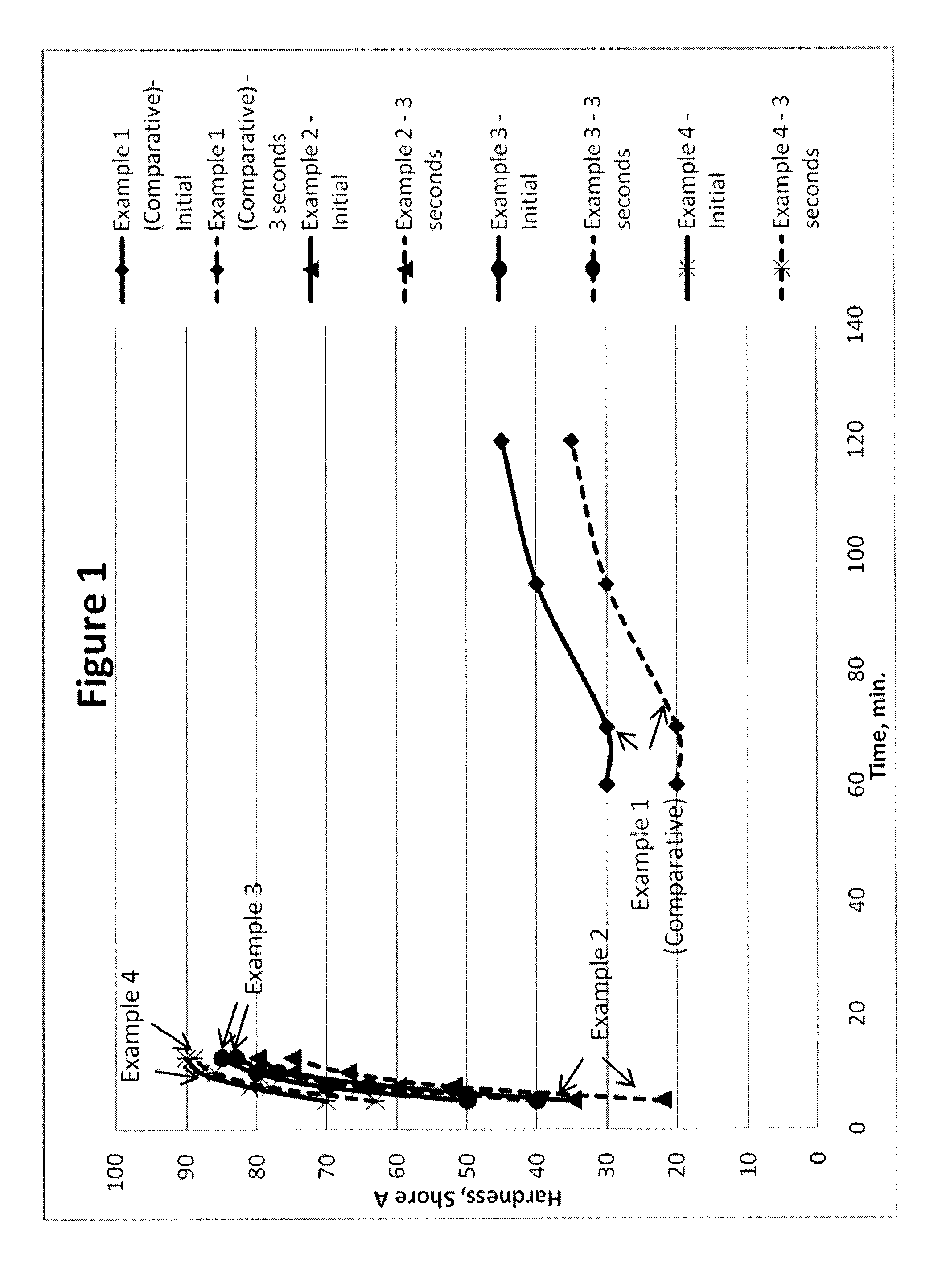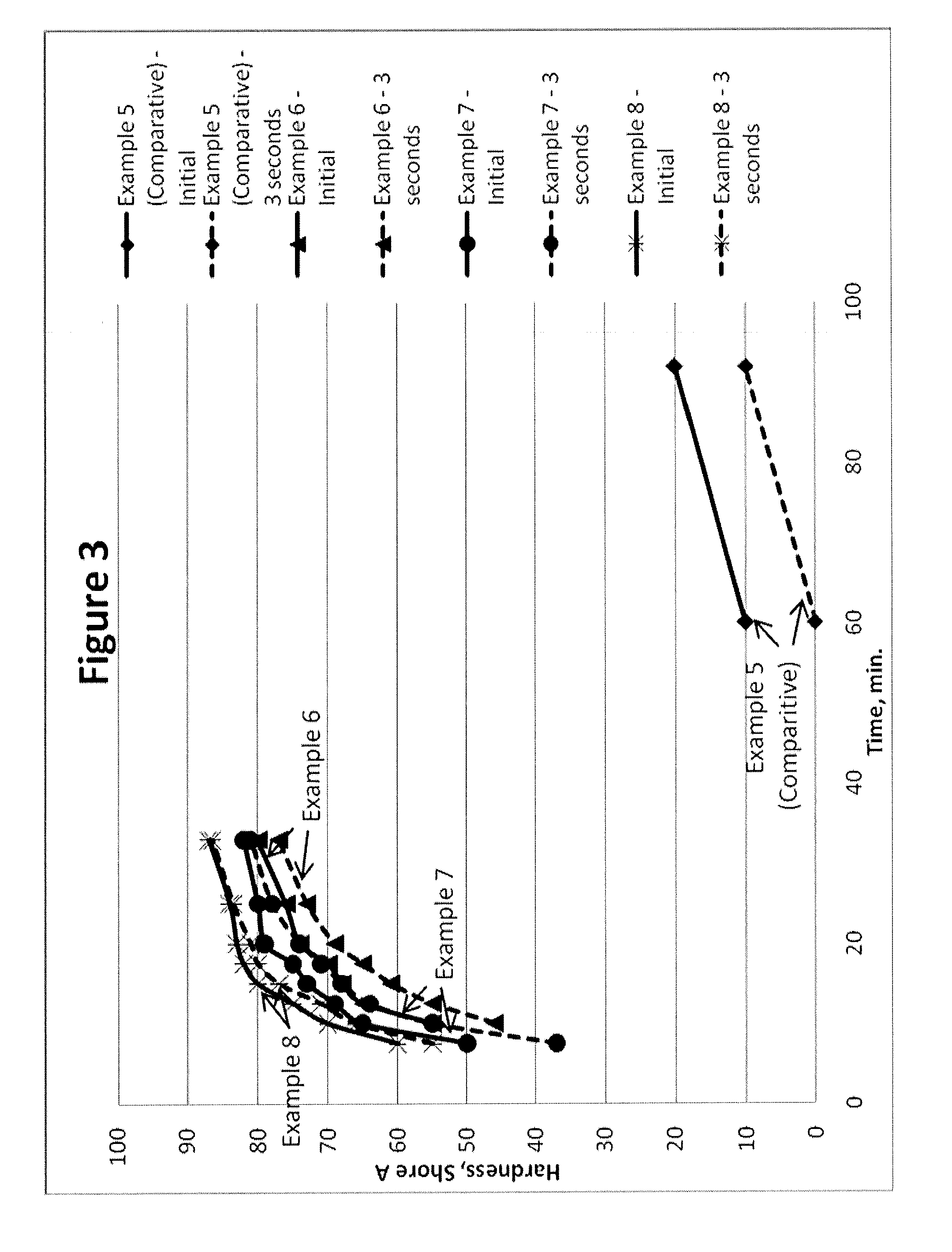Polyurethane Elastomers Based on TDI Prepolymers Enriched in the 2,6-TDI Isomer Cured with Trimethylene Glycol Di-(para Amino Benzoate)
a technology of trimethylene glycol di-(para amino benzoate) and polyurethane elastomers, which is applied in the field of polyurethane elastomers based on tdi isomers enriched in the 2,6-tdi isomer cured with trimethylene glycol di-(para amino benzoate), can solve the problems of inferior tear strength, limited hardness range of 55 a or less of elastomers, and laborious and inefficien
- Summary
- Abstract
- Description
- Claims
- Application Information
AI Technical Summary
Benefits of technology
Problems solved by technology
Method used
Image
Examples
examples 1-12
[0046]The conventional toluene diisocyanate (TDI) based prepolymers were synthesized in the following manner. A three-necked, 1 L round-bottom flask was used as the reaction vessel and it was equipped with a thermocouple to monitor temperature, a mechanical stirrer, and a vacuum source. The reactions were carried out in a nitrogen atmosphere due to the moisture sensitivity of the isocyanates. The polyol or polyol mixture was added to the flask and allowed to mix for at least 5 minutes and heated / cooled until the material was at a temperature of 30-40° C. at which time the TDI was added with the stirrer off. The agitation was restarted and the reaction exotherm monitored to keep the temperature below 70° C. Once the exotherm had completed, the vessel was heated to 80° C. and the reaction was taken to completion as verified by isocyanate (NCO) titration. The material was then degassed under vacuum.
[0047]The following list describes the polyols / chain extender used in the Examples and T...
example 1
Comparative
[0056]297.7 g of PTMEG 1000 was added to the reaction flask. To this 102.3 g of 100% 2,4 TDI, available from Bayer Material Science under the trade name Mondur® TDS was added to the flask and rapid stirring begun. The mixture was held at 80° C. until complete as verified by % NCO titration.
example 2
[0057]297.7 g of PTMEG 1000 was added to the reaction flask. To this 102.3 g of an 80:20 mixture of 2,4:2,6 TDI, available from Bayer Material Science under the trade name Mondur® TDI-80 was added to the flask and rapid stirring begun. The mixture was held at 80° C. until complete as verified by % NCO titration.
PUM
| Property | Measurement | Unit |
|---|---|---|
| Fraction | aaaaa | aaaaa |
| Fraction | aaaaa | aaaaa |
| Fraction | aaaaa | aaaaa |
Abstract
Description
Claims
Application Information
 Login to view more
Login to view more - R&D Engineer
- R&D Manager
- IP Professional
- Industry Leading Data Capabilities
- Powerful AI technology
- Patent DNA Extraction
Browse by: Latest US Patents, China's latest patents, Technical Efficacy Thesaurus, Application Domain, Technology Topic.
© 2024 PatSnap. All rights reserved.Legal|Privacy policy|Modern Slavery Act Transparency Statement|Sitemap



